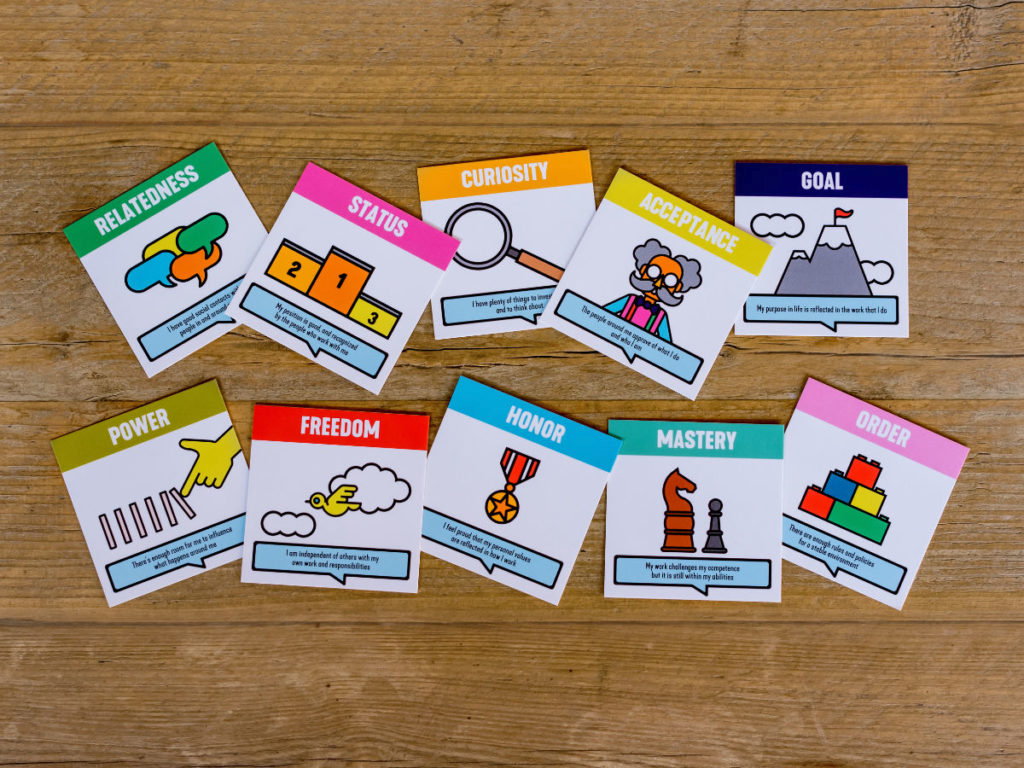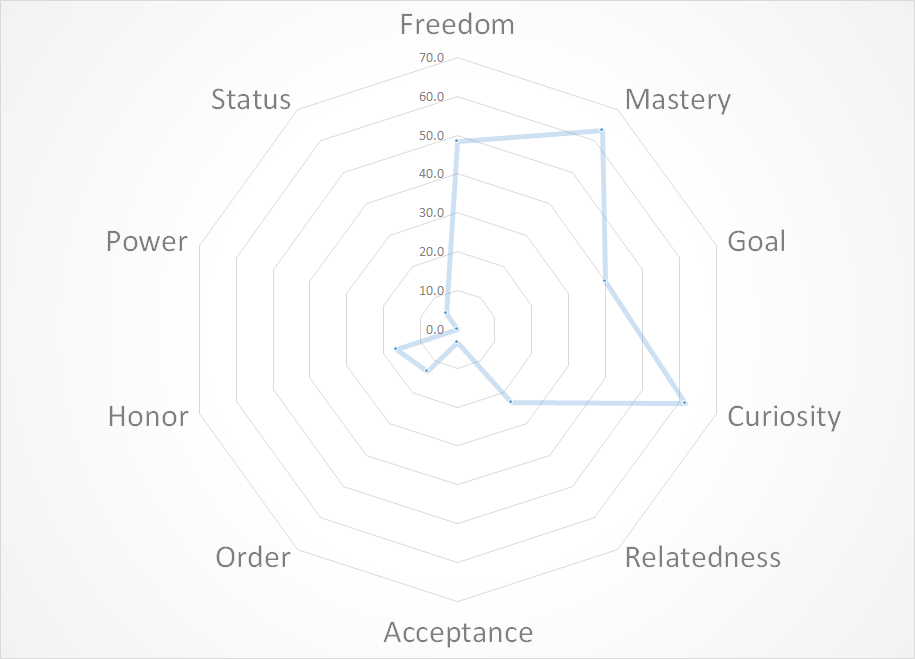There are several works related to individual motivation. Those works cover triggers, factors, enablers, or other perspectives being analyzed. Management 3.0 provides a set of tools to enable a powerful reflection and meaningful conversations aiming to energize the team (including motivate them).
After taking the course, I decided to try a new approach to gather information about my team related to motivation by using Moving Motivators. Moving Motivators is a practice included in Management 3.0 course aiming to provide information to energize the people in the team. The practice is basically an exercise looking to help the people to reflect on motivation and how it affects organizational change [Reference]. The exercise is based on ten intrinsic desires, which Jurgen Appelo – Management 3.0 book author, derived from previous works from Daniel Pink, Steven Reiss and Edward Decci. The next image shows the cards used for the technique.

I started my experiment by arranging a personal conversation with every member (1:1) in the team following the next agenda:
- I setup an initial expectation for the session emphasizing that it was not related to projects but focused on their career development and growth.
- I briefly explained the purpose, origins, and description of every moving motivator.
- After such description I asked them first to order the moving motivators from left to right where the left side represented the most relevant moving motivators for them.
- Next, I asked them to build an imaginary horizontal axis and then assess the current existence of such motivator in his current work environment during the last 2 weeks. If the moving motivator exists in a good degree then locate the moving motivator on above the horizontal axis, locating it below the imaginary axis meant that there was a perception that such motivator were not present.
- Finally, I had a conversation using some questions to trigger a reflection:
- What do you experience doing this exercise? Why?
- Consider this specific X motivator located above the imaginary axis, Can you elaborate more about why you locate such motivator in such location? What do you think we should continue doing to keep such motivator in such level?
- Consider this specific X motivator located below the imaginary axis, Can you elaborate more about why you locate such motivator up? What do you think we should stop or start doing to move such motivator up?
This exercise was an eye opening experience for me since I discovered new personal characteristics in every team member that actually helped me to foster a more energizing environment with data to support my decisions and also investing energy in areas that the team considered important.
The next image showed a picture of one team member after the conversation.

The experience using this technique with each member was very interesting since I experienced many powerful discoveries:
- Many team members shared the fact that it was the first time that they reflected on what they consider important for themselves and they agreed that it was an important element to reflect.
- Many team members were out of their comfort zones since this was a new type of conversation that they do not regularly have.
After having the conversation with all of them, I consolidated the data to make visible the current motivators that are more important to the team by building a motivator radar. The next image shows the results from the consolidation of data in my team.

The insight that I got from this data was:
- Any effort to increase the motivation in the team should consider aspects to foster and protect the Mastery, Curiosity, Freedom, and Goal motivators. If I try to give some sort of visible award may not have the result that I expected. However, letting them to decide which complex task they want to work will have a better motivation effect.
- I shared this information with the entire team, which it was also an interesting exercise. They got a better picture of what they are motivated as a group.
Using this technique is a powerful tool to confirm or fix your assumptions about what is important for your team members. It also provides a good data to help leaders to assess if they are working on initiatives that will actually increase the motivation of the team.
I will do a following conversation to assess the moving motivators in the team in 6 months to see if the improvements and actions that we are putting in place are increasing the motivation of the team.
